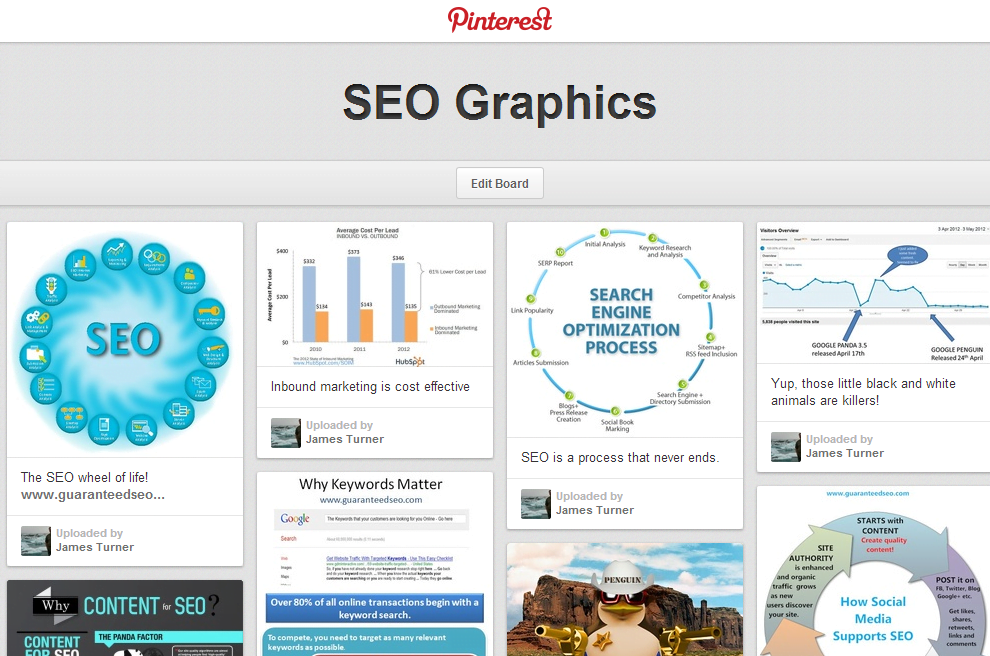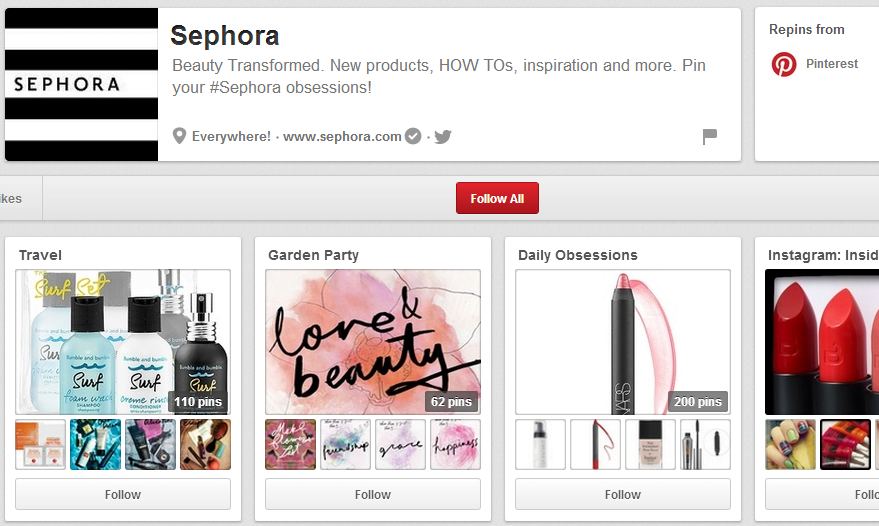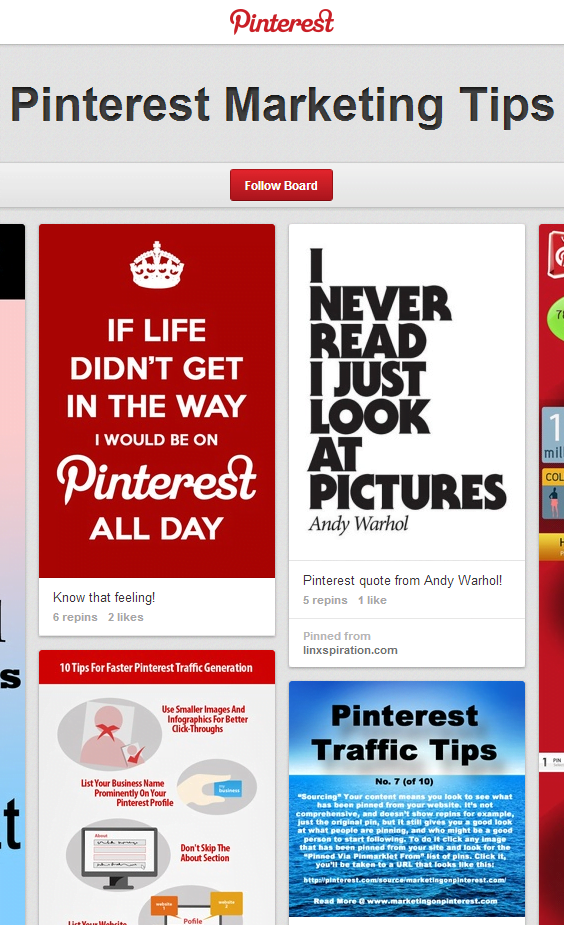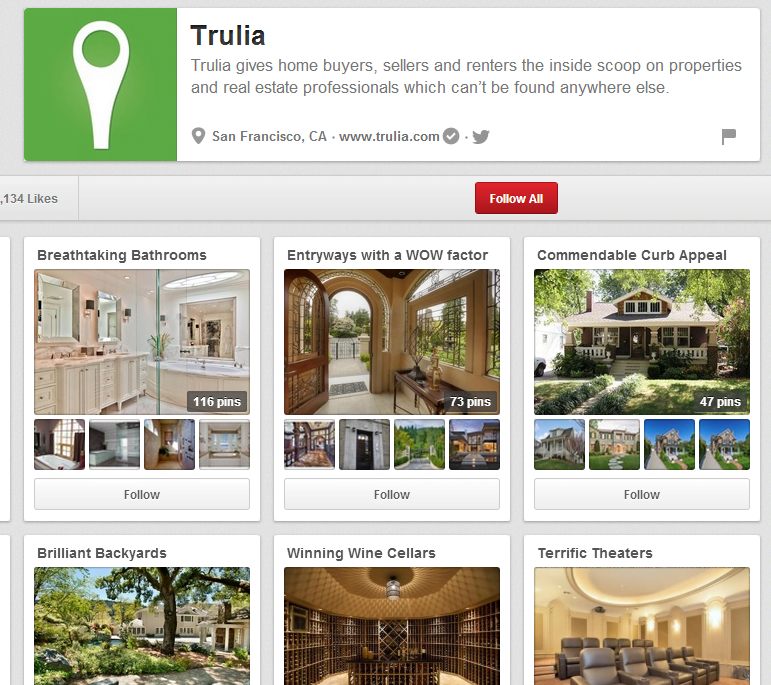
Pinterest For Business
As of April 2013, Pinterest boasted an astounding 48 million users. When you take into account that this site is still in its infancy and appeared onto the social sharing stage at a time when internet users were almost drowning in social sites, this number is pretty astonishing. What’s more, the number of Pinterest users is growing astonishingly quickly. In February, the number of users on Pinterest hovered around the 25 million mark.
Yet despite Pinterest’s large user base, and immense growth, there is still heaps of skepticism surrounding this social sharing platform, especially when it comes to utilizing Pinterest for business as a marketing tool. There are those that would pass Pinterest off as a silly online scrapbook full of pin boards with nothing but delicious food and fancy houses “pinned” to them. These skeptics might go so far as to label the site a hokey, childish, and irrelevant. These skeptics would be wrong, however. The truth about Pinterest is that this quaint little social sharing site, when used to its fullest potential, will play a massive role in your online marketing efforts.
If the number of Pinterest users doesn’t do enough to convince you that it is a place your brand or business should be represented, here are some stats that you shouldn’t ignore: One in five Pinterest users say they have purchased something they have come across on Pinterest. Additionally, according to Rich Relevance, Pinterest users are spending a lot when they do make a purchase. The average purchase by a Pinterest user is between $140-$180USD. When you take into consideration that purchases made by Facebook users average $80 per purchase and Twitter users $60 per purchase, this makes marketing on Pinterest a must.
An extreme example of how much more Pinterest users spend comes to us from the cosmetic company, Sephora, who reports that, on average, their Pinterest followers spend roughly fifteen times as much per purchase than their Facebook or Twitter audience.

In some market segments pinterest is already the leading social media driver of sales… you can see why!
According to Digitas, unlike other social networking sites, seventy percent of engagement on Pinterest is generated by users as opposed to companies, brands, and businesses. Because users generally trust their friends and fellow online users more than brands, the more the public at large shares a company’s product online, the more likely their audience is to buy into your business. Also according to Digitas, when a brand pins a picture to their own pin board, each pin averages 46 re-pins.
When you take into consideration that each time a user re-pins one of your Pinterest pins, their own audience sees your product and is likely to re-pin it as well, the potential for expanding your audience is massive. When it comes to referring traffic back to a company’s website, Rich Relevance has found that Pinterest is responsible for more referral traffic than any other social sharing site aside from Facebook.
For retail, that means that Pinterest brings in as much as twenty-five percent of all referral traffic. For industries such as fashion and home furnishings, Pinterest is responsible for as much as sixty percent of all referral traffic. For more Pinterest statistics, have a look at this fun and informative Pinterest Pinboard. With these statistics in mind, it would seem that using Pinterest for business is a must. The question then becomes, how do you maximize Pinterest’s potential and put this social sharing site to work for you?
1st Tip – Set up a Company Account: Recently, Pinterest made their site even more marketing-friendly by allowing business-specific accounts. If you’ve already got a personal account for your business it is also possible to convert it. With Pinterest’s business accounts, there are more options for customizing your page making it easier to create more of a brand impact. Like Twitter, Pinterest also has verified accounts which will let users know that your Pinterest page is the official representation of your brand or business.
A verified account also allows you to add your company’s website URL to your page making it easier for users to click onto your website from Pinterest.
2nd Tip – Be Social: In case we haven’t drilled this point home enough, it is imperative to garner engagement by interacting with other users. Take the time to like people’s pins, re-pin items, and comment on what people have pinned.
3rd Tip – Maximize SEO Opportunities on Your Pins: Each time you pin an item to one of your Pinterest pin boards, there is an opportunity to add a description to the pin. By adding a description, it is possible to engage in a little bit of search engine optimization. When writing a description, be sure to use keywords which are relevant to the product you are pinning as well as your business or brand. When a user re-pins one of your images, the description remains attached to it. That means that, as your image floats through the Pinterest universe, the words you have attached to it are seen by every user who comes across that image. Be sure to include your company’s name in each item you pin.
4th Tip – Maintain a Consistent Pinterest Presence: Like any other social networking platform, Pinterest will require consistent attention. It is necessary to log into your account regularly and to pin often. Do not let your Pinterest account become stale and neglected. Logging in once a month, or even once per week won’t cut it. At a minimum, do a bit of pinning once per day.
5th Tip – Add a “Pin it!” Button to all of Your Content: Pinterest is all about sharing. Be sure to make it as easy as possible for users to share your content. It is easy to add.

To learn how to use Pinterest, simply look up the many tips and tricks people have already pinned!
Pinterest’s “Pin It!” button to your blog. The simple addition of Pinterest’s button means that Pinterest users can share your blog without leaving your website or needing the external “Pin It” browser button which only allows users to pin an image. For more Pinterest tips, and an example of a creative way to use the social sharing site, check out Digital Agency’s “Pinterest Marketing Tips” pinboard.
If you’re still not convinced of Pinterest’s marketing potential, have a look at some of these awesome and successful corporate Pinterest pages:
Whole Foods Market: This grocery store chain which started as a single location in Austin Texas has multiple pin boards related to the products and services they offer.
General Electric: This company, which has been around since 1892 has managed to make a fun, exciting, and engaging Pinterest page.
Trulia: While Both Whole Foods and GE are highly recognizable brands, Trulia is a smaller real-estate company. Their success on Pinterest is an example of how Pinterest is useful in virtually any market.

Going the extra mile and putting some effort into your Social Media site always shows! Trulia have done that and have a site that is attractive even if you’re not currently interested in real estate
It is the newness of Pinterest that often leads to the site coming under fire by internet marketing skeptics. When it comes to marketing online, it is imperative not to shy away from something simply because it’s new. The speed at which the internet is changing means that the most successful businesses will be the ones that roll with the punches and adapt their marketing strategy to what is successful at the moment. Pinterest is definitely one of the punches that you need to roll with.